There is little dispute the modern cannabis industry was born in Humboldt County, California. There is much dispute, however, about what the future holds for small cannabis farms in Humboldt County and for sungrown cannabis in the expanding United States marketplace.
With multinational corporations establishing industrial-scale cultivation operations in greenhouses and indoor facilities, limited shelf space in retail outlets, and multistate operators vying for market share and brand allegiance, competition for consumer dollars has never been more intense.
As the legal industry grows and product categories expand well beyond flower and pre-rolls, the same northern California farmers who laid the groundwork for cannabis cultivation find themselves in a difficult and frustrating position with market trends heading in the wrong direction for outdoor growers. Beyond consumers’ preference for indoor flower, the number of product categories and SKUs have grown exponentially over the past few years, offering consumers a dizzying variety of extracts, edibles, and beverages from which to choose.
All these market forces raise a difficult question for small outdoor farmers: How much room is there for sungrown, full-season flower in a retail market that prizes ultra-frosty, high-THC indoor bud and the convenience of vaporizers and edibles?
Of course, it’s not just small farmers in the Emerald Triangle who place their faith in outdoor cultivation. In most of the states where cannabis has been legalized, outdoor licenses are available and companies are starting to make big plans to utilize Mother Nature’s sun, wind, and rain to nurture crops.
A splintered grow scene
Cannabis cultivation has come a long way since the days when hippies scattered seeds and hoped for the best six months later. Today’s cultivation industry is a hybrid of old-school, tried-and-true growing methods combined with new practices and technologies that allow farmers to maximize yields and harvests, producing as many as four or five crops every year.
The outdoor grow scene has become complex and varied enough that it has its own lexicon, and farmers toss around vernacular that requires a field guide for the uninitiated. Light dep, hoop house, hybrid indoor, mixed light, autoflower, full-term, and full sun are just a few of the phrases farmers have adopted to describe cannabis growing styles in the great outdoors. Even “greenhouse” doesn’t mean what the public at large might assume.
When consumers peruse retail menus, they may not see flower labeled “indoor,” “greenhouse,” or “outdoor.” Stores often don’t make those distinctions, and consumers are left to judge flower simply by its appearance, aroma, and lab results.
Even without knowing in which environment flower was grown, wholesale prices indicate consumers are willing to pay quite a bit more for indoor-grown bud. In California during 2020, the average wholesale price per pound for cannabis grown outdoors was $900 to $1,100, while greenhouse flower averaged $1,150 to $1,300, and indoor flower commanded a whopping $1,800 to $2,200. Although greenhouse prices were up about 30 percent from 2019, both indoor and outdoor prices remained steady. In states with limited licenses like Massachusetts and Illinois, where greenhouse and outdoor cannabis are scarce, prices for indoor flower may be as high as $3,600 per pound.
However, just because consumers on the West Coast aren’t sold on the virtues of outdoor cannabis doesn’t mean relative popularity will play out the same way in newer markets, where the novelty of sungrown and organic weed could draw interest. Likewise, when federal legalization finally becomes a reality, regions like Humboldt County will have an opportunity to ship their buds to markets across the U.S. If appellation initiatives bear fruit, the Emerald Triangle could be marketed as “the Napa Valley of weed.”
Natalynne DeLapp, co-founder and executive director at Humboldt County Growers Alliance, helped shape Humboldt County’s Medical Marijuana Land Use Ordinance. When she talks about the challenges small farmers face, the first thing that comes to mind is the insufficient number of retail outlets and a general indifference to outdoor flower from buyers, distributors, and consumers.
“Of course the farmers are frustrated,” said DeLapp when asked about the lack of respect and representation for outdoor flower in California’s retail market. “They have developed artisanal techniques, and a lot of them are cultivating in very holistic manners and integrating regenerative farming practices, which is absolutely necessary for our forests and landscapes. They’ve developed a craft product and they have some of the most interesting genetics, so they have truly created a valuable product. But we’re at a point still where the consumer doesn’t have an understanding of what truly is valuable.”
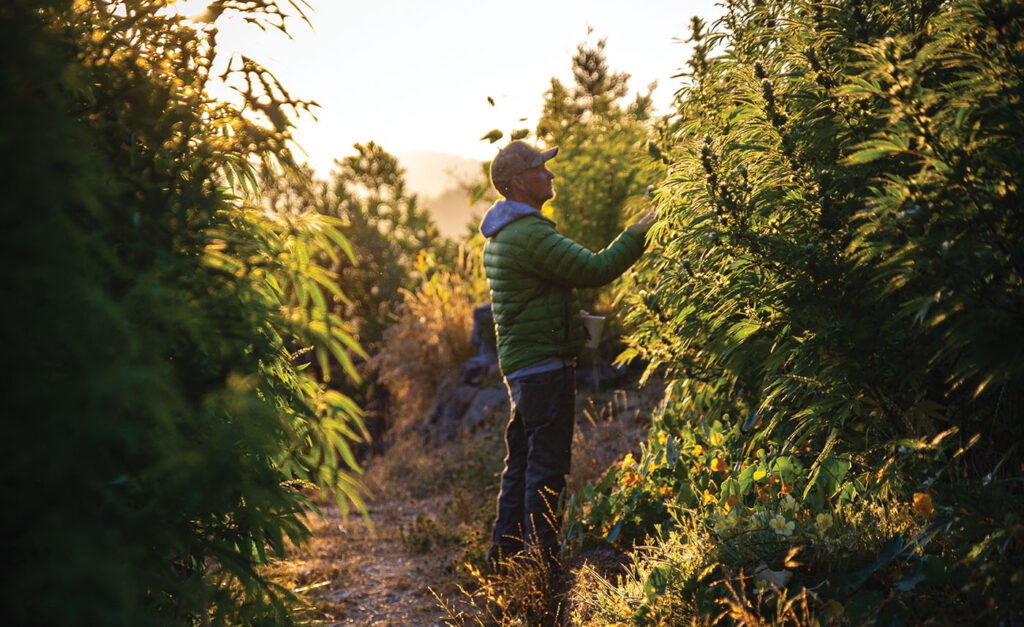
Respecting the plant
When intrepid farmers set up shop on remote mountain ridges and in valleys in the Emerald Triangle, they brought seeds from around the world and created new genetics and hybrid strains that now are featured on retail menus from Los Angeles to Boston and everywhere in between. The lack of respect and appreciation for full-season, artisanal weed in California is difficult for many farmers to understand.
“One of our farmers just toured thirty-five retail dispensaries in the Los Angeles area [that carry] packaged sungrown flower and said about 85 percent of the weed that’s on the shelves is indoor,” said DeLapp. “Even for procurement managers at the retailers, their understanding of what sungrown is and isn’t is limited. And then the brands that are supposedly sungrown, all the retailers are carrying very limited supplies, and it’s big brands like Farmer and the Felon or Flow Kana. There’s not a lot of diversity in the market for more craft, artisanal sungrown, and it doesn’t seem like the retailers even have a palate for it.”
Despite the lack of outdoor cannabis on store shelves in big cities, distributors and retail outlets in smaller towns are more inclined to stock and promote sungrown products.
Alpenglow Farms is 10,000-square-foot farm situated on a sunny ridge high in southern Humboldt County. Co-founders Craig and Melanie Johnson have spent the past two decades carving out a homestead and learning how to farm cannabis in the most environmentally sustainable ways possible.
“What you get with sungrown is the highest quality, the highest terpene profiles, and then you mix in regenerative farming practices with our roots in the ground with living soils, and that brings quality up and costs down,” Craig Johnson said. “And it doesn’t stop at the garden. It’s how we cure it. It’s how we store it. It’s how we trim it and how we nurture it through the whole process. That’s what makes Humboldt so special.”
Sungrown flower heads east
While sungrown flower has a long history and is abundant on the West Coast, operators in other states only recently began gearing up to make outdoor cannabis a major component of their business plans. States with strong agricultural roots and infrastructure are in prime position to become big players in outdoor cannabis farming. In fact, some of the largest outdoor operations in the U.S. are in Oklahoma, with Nevada and New Mexico not far behind.
New Mexico legalized adult use in 2021; the first retail stores are expected to open in Spring 2022. The biggest producer in the state is Ultra Health, which controls more than 15 million square feet of retail, production, and cultivation space. Believed to be the largest minority-owned cannabis company in the U.S., Ultra plans to have fifty dispensaries in operation by the end of 2022. The company is bullish on outdoor cannabis; it purchased 200 acres of farmland in 2018 and plans to acquire another 150 acres.
“I do think we will be pivoting as an industry to put a greater emphasis on outdoor cultivation,” said Chief Marketing Officer Marissa Novel. “Now, that could pose some interesting issues in terms of supply, and we might have a glut of products in the fall when the harvest comes down. But we are in a market where we need to absorb as much product as possible because we’ve been operating at such low levels for so long.”
At the moment, cannabis producers in New Mexico are limited to a total of 1,750 plants per licensee, which doesn’t provide much incentive for outdoor cultivation. However, to prepare for the adult-use market and higher plant caps in the near future, Ultra Health has been experimenting with growing hemp; in 2019 the company planted about five acres of the low-THC member of the cannabis family. With high winds during the year’s growing season, the plants suffered, so in 2020 the company planted several types of perimeter crops around the field, including corn and pine trees, to help block the gusts. The solution proved successful.
Going forward, Ultra Health has recommended to the state that each licensee be allowed to plant 10,000 mature cannabis plants outdoors. “We think that will be a great opportunity for us to plant several acres down into the earth, and we may experiment with some autoflower THC plants too,” said Novel. “But we’ll probably do, I would say, close to thirty acres outdoors next year.”
When New Mexico’s plant caps end in 2026, Novel said there will be even more significant opportunities for New Mexico companies to farm sungrown flower. “By 2026, when we actually utilize all of our land for outdoor cultivation, I think a lot of folks are going to gravitate toward those more commercial-scale agricultural products.”
On the East Coast, states issue only a limited number of licenses for outdoor cultivation, even though in many states the climate is well-suited for sungrown flower. In North Carolina, South Carolina, Tennessee, and Kentucky hemp has become a thriving industry, so cannabis should perform well too.
Nova Farms, which has been growing cannabis in the Berkshires in Massachusetts since 2018, was one of the very first growers on the East Coast to receive an outdoor license. Anthony Bowen, director of cultivation, oversees 100,000 square feet of crops for the company. In 2021, he planted autoflower plants in early May and harvested them in early July. He said full-season crops normally must be harvested in September, although if the weather cooperates the season can be pushed a little longer. He hopes eventually to squeeze in three, or possibly four, greenhouse harvests per year.
In Massachusetts, where supplies of flower are limited, consumers pay almost as much for outdoor as they do for greenhouse and indoor, Bowen said. “I really think with [cannabis] being grown outdoors, people enjoy that because it’s something that was never available in the retail space before. Everything’s been indoor and, over the past two years since we’ve opened up, we can now offer our consumers outdoor flower. We ran Sour Diesel for the past two years, and obviously with the name itself it flies off the shelf.”
Because outdoor grows are a long-established tradition on the West Coast—California and Oregon, in particular—farmers have learned through trial and error which strains are the most well-adapted to the mountainous regions, and more recently to the rolling hills and dryer, hotter climate in Santa Barbara county. For growers in the Southwest, Midwest, and on the East Coast, the process of testing strains outdoors is just beginning. There are sure to be some major growing pains ahead as farmers confront unpredictable weather, shorter seasons, pests, mold, and other hazards that can destroy crops.
Born and raised in Massachusetts, Bowen has been a grower in the Emerald Triangle and Maine. When Massachusetts opened up, he signed on with Nova Farms. “I mean, anything can happen with different weather patterns, the wind, the rain, and even snow,” he said. “So you always have to be ready to take your crop down at any given time, from October into November. At the same time, you don’t want to wrestle big plants in Massachusetts. I have a 100,000-foot canopy that I don’t want getting over seven feet tall. It’s just not manageable.”
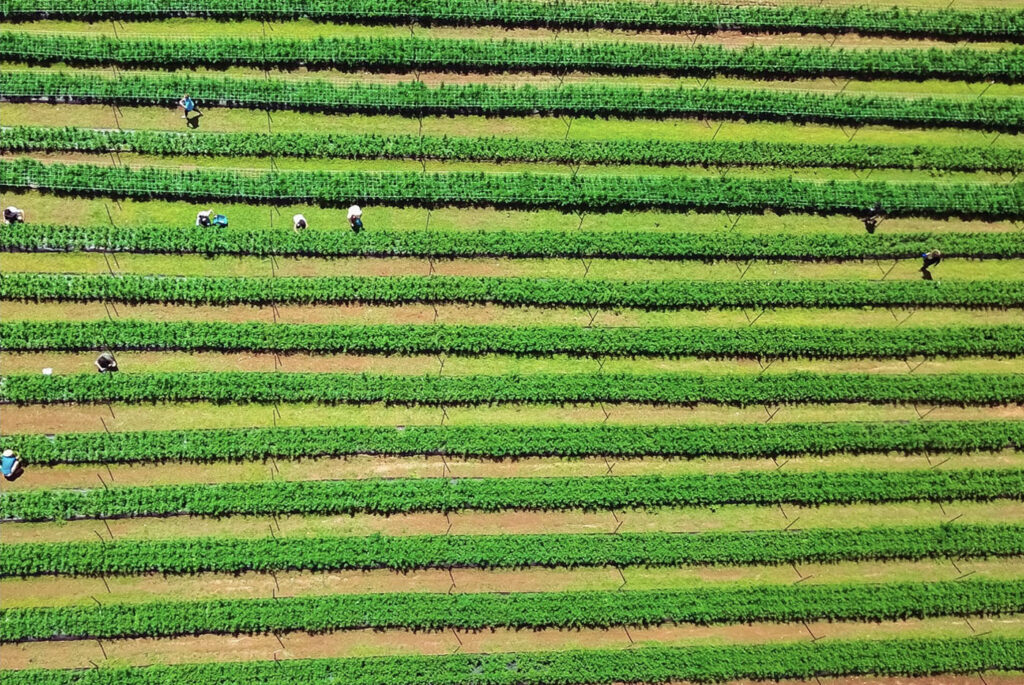
Artisanal flower and hash
One of the most practical ways outdoor growers can maintain a healthy bottom line in an increasingly competitive market is by expanding their product lines to include items besides flower—oils, hashish, and high-end extracts featuring the abundant bouquet of terpenes that develop and intensify when cannabis is exposed to the sun and natural elements for a full season.
In 2015, Robert and Linda Trotter began growing cannabis in Colorado at their TNT Botanicals farm, which sits 8,200 feet above sea level in a region with a short growing season and extreme temperatures. But six years later, the Trotters have turned the company and their flower brand, Pot Zero, into a successful, sustainable operation that may be the only carbon-neutral cannabis farm in the United States.
“Right now our plants are growing two to three inches a day because of the power of the sun and energy up here, and we’re getting really high-quality flower,” Robert Trotter said. “I’ll put my flower up against anybody, anywhere, anytime. It’s a joke that people say you can’t grow great marijuana outside. In fact, I believe the greenhouse grows will go the way of the dinosaurs over time.” At the THC Classic 2021, Colorado’s largest blind-judging competition, Pot Zero’s Gotta Jiboo strain won Top Choice Wholesaler in the sativa category.
The Trotters recently were approved for a major expansion, and part of their game plan is to ramp up production of extracts and concentrates. “We basically sell all our viable flower as flower and in joints,” said Trotter. “We’re now in a partnership with our trim, and we have a very good relationship with Lucky Turtle. They are doing an outstanding job with their CO2 cartridges.”
Another key component for small farms is marketing, in whatever fashion they can, and making direct connections with their customers to draw in a broader audience and customer base.
“I go live most mornings at sunrise and do a garden tour with coffee on Instagram,” said Alpenglow’s Johnson. “We’re putting our hands in the soil and talking about what’s flowering, what’s growing. We have almost 14,000 followers. You know, it’s having as many connections as we can to the consumer, and then retailers that know our story and are educated about what it means to be DEM Pure certified. [DEM is a rigorous regenerative farm certification.] Because of that model, somebody asked this morning, ‘Where can I find your flower in L.A.?’”
Alpenglow also has a partnership with a boutique extract company, Nasha Extracts, which specializes in old-school hash-making techniques without the use of solvents. Even with stiff competition from other craft farmers and the industrial growers in central and southern California, Alpenglow has built a successful business model the Johnsons are optimistic will remain profitable into the future. So far, so good. “If somebody wants to work with us, they need to let us know ahead of time and a season before, because I always say we are completely sold out this year,” said Johnson.
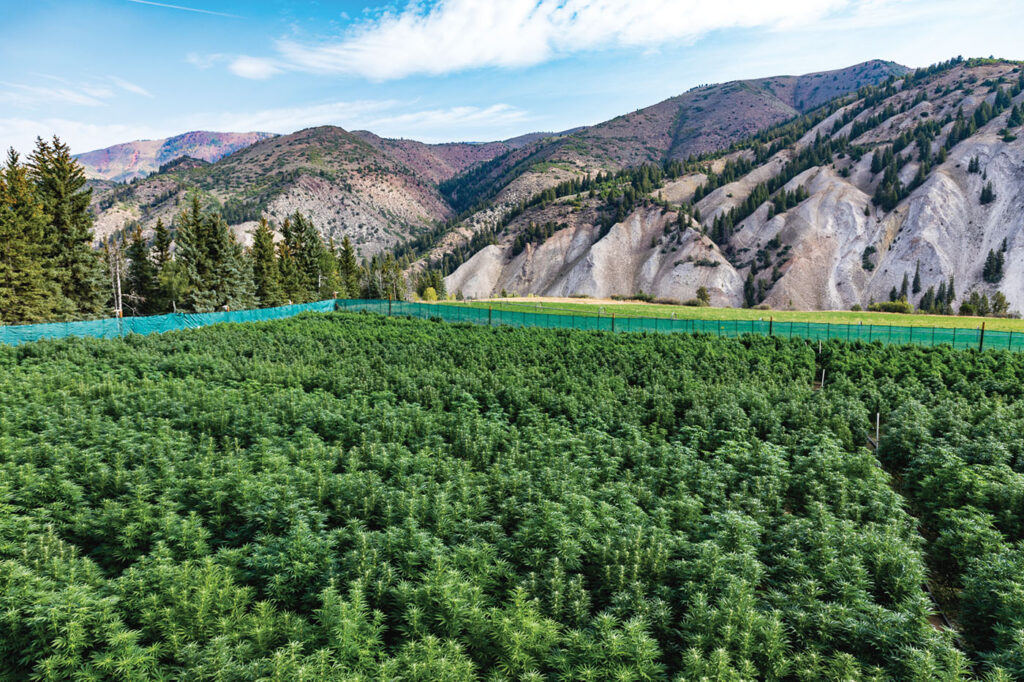
New markets, new opportunities
For larger outdoor farms in the Southwest and on the East Coast, it remains to be seen how consumers will respond to sungrown flower once there is enough supply to meet demand and shoppers have more choices on dispensary menus. As consumers in new markets become more educated and develop more sophisticated palates, they may well start to appreciate unique properties of sungrown cannabis similar to the way wine connoisseurs appreciate subtleties in vintage. Or maybe they will be drawn to outdoor flower simply because it’s less expensive than indoor crops or because it’s grown under strict organic standards.
“I think New Mexico’s experience with outdoor cultivation will be unique,” said Ultra Health’s Novel, who explained a large percentage of the population is on Medicaid and other assistance, so there will be a steady market for inexpensive weed for patients on a tight budget.
In order for small outdoor growers on the West Coast to survive, they will have to endure the weeding out and consolidation that is inevitable when markets mature, as multistate operators and large regional players swallow up smaller players. In the meantime, craft farmers will have to stay lean and mean and hold out hope consumers begin to appreciate the benefits of legacy outdoor genetics and artisanal weed. That will come down to education and marketing—an expensive proposition for any company, much less small farmers working on slim margins. Humboldt growers have an ally in the county, which has set aside some of its cultivation taxes to help promote outdoor cannabis in the coming months.
“[Humboldt County Growers Association] is writing a proposal that we will be submitting to the county, where our organization is in partnership with a really awesome marketing firm to implement a marketing strategy,” said DeLapp. “A lot of that is looking at consumer education, helping people understand the values of our industry up here. About 95 percent of our operators in Humboldt County are sungrown. So we will stress the values of sungrown, the values of living soil, and the importance of water conservation.”







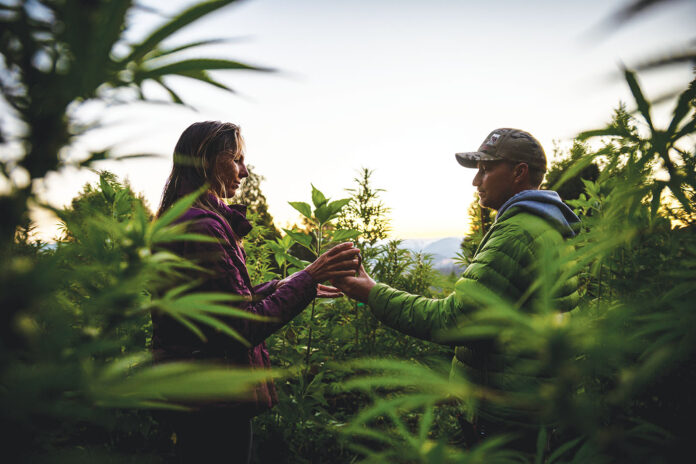


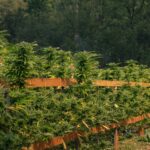

[…] jokes and high concepts. The cover perfectly introduced the issue’s content, which addressed challenges facing outdoor legacy farmers and the industry’s growing imperative for sustainable agricultural […]